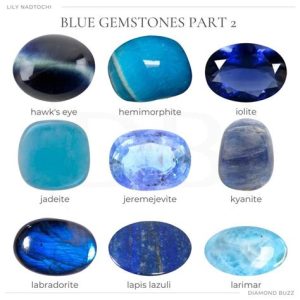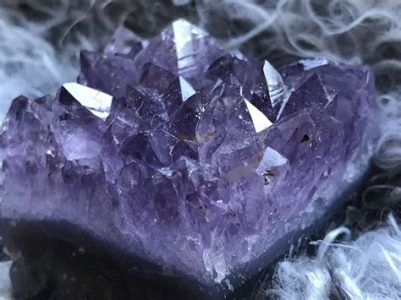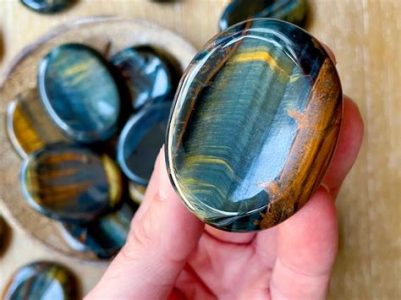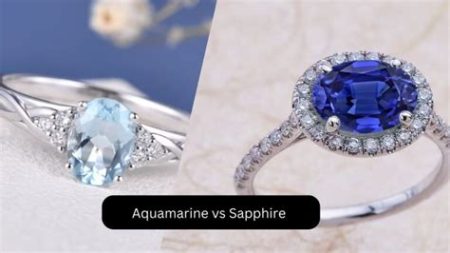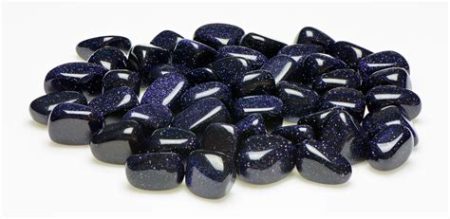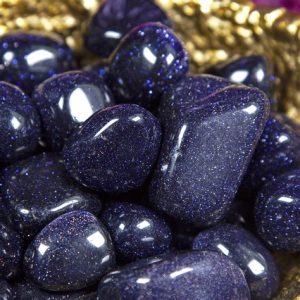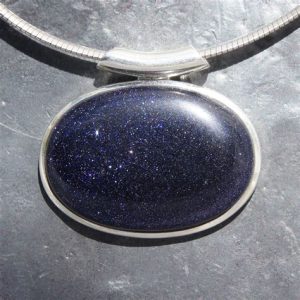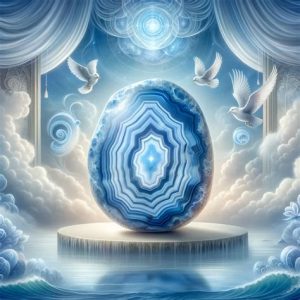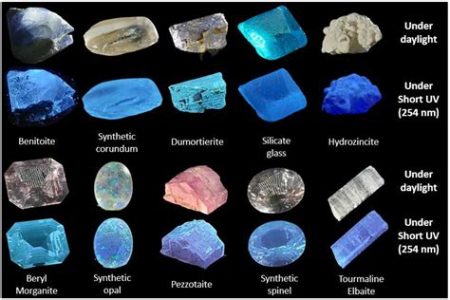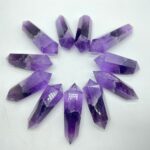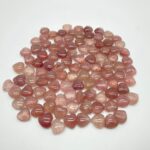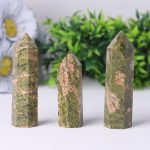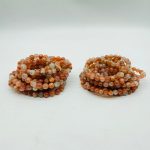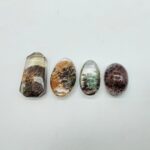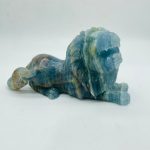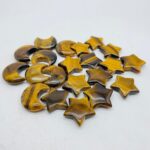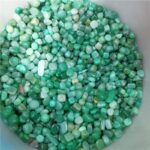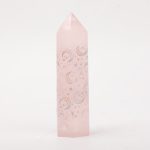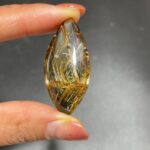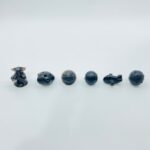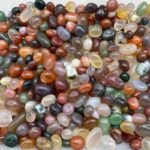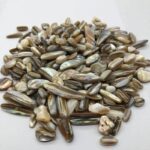In the enchanting realm of crystal healing and gemology, identifying crystals and stones with precision is paramount. Mastering this skill empowers you to unlock their potent energies and tap into their profound benefits.

Hardness and Cleavage
“Hardness is a measure of a crystal’s resistance to scratching.” – Mohs Scale of Hardness
Mohs Scale of Hardness:
| Mineral | Hardness |
|---|---|
| Talc | 1 |
| Gypsum | 2 |
| Calcite | 3 |
| Fluorite | 4 |
| Apatite | 5 |
| Orthoclase | 6 |
| Quartz | 7 |
| Topaz | 8 |
| Corundum | 9 |
| Diamond | 10 |
Cleavage refers to a mineral’s tendency to break along certain planes. This property can be diagnostic in identification.
Luster and Transparency
Luster describes the way a crystal reflects light:
- Metallic: Resembles polished metal
- Glassy: Transparent with a vitreous appearance
- Greasy: Oily and translucent
- Silky: Fibrous, with a silky sheen
Transparency refers to the ability of a crystal to transmit light:
- Transparent: Allows light to pass through clearly
- Translucent: Allows light to pass through but obscures objects
- Opaque: Blocks light passage
Color and Streak
Color is a primary identifying characteristic, but can be unreliable due to impurities and variations.
Streak is the color of a mineral in powdered form. It is often more diagnostic than color.
Crystal Shape and Habit
Crystals exhibit specific shapes based on their internal atomic structure:
- Cubic: Cube-shaped
- Hexagonal: Six-sided prism
- Trigonal: Three-sided prism
- Tetragonal: Four-sided prism
- Orthorhombic: Rectangular prism
- Monoclinic: Oblique prism
- Triclinic: Asymmetrical prism
Habit refers to the overall form of a crystal, such as:
- Acicular: Needle-like
- Bladed: Flattened and blade-shaped
- Drusy: A cluster of tiny crystals
- Reniform: Kidney-shaped
Inclusions and Imperfections
Inclusions are foreign materials trapped within a crystal, such as:
- Bubbles: Air or gas pockets
- Crystals: Smaller crystals of a different mineral
- Fractures: Cracked or broken areas
Imperfections can also provide clues to a crystal’s identity:
- Twinning: Two crystals fused together
- Etching: Irregular surfaces caused by chemical reactions
Additional Identification Methods
- Specific Gravity: The mass of a crystal compared to an equal volume of water.
- Refractive Index: The measure of how a crystal bends light.
- Spectroscopy: Analysis of a crystal’s absorption and emission spectra.
Comparative Analysis
Crystal A vs. Crystal B
| Characteristic | Crystal A | Crystal B |
|---|---|---|
| Hardness | 5 | 7 |
| Luster | Glassy | Metallic |
| Color | Pink | Green |
| Streak | Pink | Yellow |
| Crystal Shape | Hexagonal | Cubic |
| Habit | Drusy | Bladed |
| Inclusions | Bubbles | Crystals |
Table 1: Identification Key for Common Crystals
| Crystal | Hardness | Luster | Color | Streak | Shape | Habit |
|---|---|---|---|---|---|---|
| Amethyst | 7 | Glassy | Purple | Purple | Hexagonal | Drusy |
| Aquamarine | 7.5 | Glassy | Blue | Blue | Hexagonal | Bladed |
| Calcite | 3 | Glassy | White | White | Trigonal | Rhombohedral |
| Citrine | 7 | Glassy | Yellow | Yellow | Hexagonal | Drusy |
| Diamond | 10 | Metallic | Colorless | Colorless | Cubic | Octahedral |
| Emerald | 7.5 | Glassy | Green | Green | Hexagonal | Bladed |
| Garnet | 6.5 | Glassy | Red | Red | Cubic | Dodecahedral |
| Jasper | 6 | Opaque | Red | Red | Orthorhombic | Massive |
| Labradorite | 6 | Glassy | Gray | Blue | Triclinic | Feldspathic |
| Moonstone | 6 | Glassy | White | White | Monoclinic | Adularia |
| Quartz | 7 | Glassy | Colorless | Colorless | Trigonal | Prismatic |
| Ruby | 9 | Metallic | Red | Red | Trigonal | Rhombohedral |
| Sapphire | 9 | Metallic | Blue | Blue | Trigonal | Rhombohedral |
| Topaz | 8 | Glassy | Yellow | Yellow | Orthorhombic | Prismatic |
| Turquoise | 5 | Greasy | Blue | Blue | Triclinic | Massive |
Table 2: Diagnostic Tests for Crystals
| Test | Measure | Interpretation |
|---|---|---|
| Scratch Test | Hardness | Scratch with a known mineral |
| Streak Test | Color | Powdered mineral’s color |
| Acid Test | Reaction | Fizzing indicates calcite |
| Flame Test | Color | Flame’s color indicates certain elements |
| Specific Gravity | Density | Mass compared to water volume |
Table 3: Therapeutic Properties of Crystals
| Crystal | Properties |
|---|---|
| Amethyst | Calming, spiritual growth |
| Aquamarine | Courage, communication |
| Calcite | Energy cleansing, grounding |
| Citrine | Abundance, positivity |
| Diamond | Protection, clarity |
| Emerald | Balance, heart healing |
| Garnet | Passion, vitality |
| Jasper | Strength, protection |
| Labradorite | Intuition, transformation |
| Moonstone | Emotional balance, creativity |
| Quartz | Healing, energy amplification |
| Ruby | Love, energy |
| Sapphire | Wisdom, protection |
| Topaz | Success, clarity |
| Turquoise | Communication, healing |
Table 4: Tips for Identifying Crystals and Stones
- Observe carefully: Examine the crystal’s physical characteristics.
- Use reference materials: Consult books, websites, and field guides.
- Consider the context: Where and how the crystal was found can provide clues.
- Seek professional assistance: Consult a gemologist or crystal healer for expert identification.
- Emphasize experience: Handling and observing crystals over time enhances your intuition.
Market Insights
The global crystal and stone market is projected to reach $15 billion by 2025 (Research and Markets), driven by growing spiritual awareness and demand for alternative healing practices.
Motivations for Crystal Use:
- Enhance emotional well-being
- Promote healing and spiritual growth
- Create sacred spaces and harmonize energy
Pain Points:
- Difficulty in identifying and authenticating crystals
- Confusion over therapeutic benefits
- Lack of reliable information sources
Conclusion
Unlocking the secrets of crystals and stones empowers you to harness their remarkable energies and enhance your life. By mastering identification techniques, you can elevate your spiritual practices, create soothing environments, and foster personal growth. Embark on this enchanting journey and discover the transformative power of these ancient treasures.

